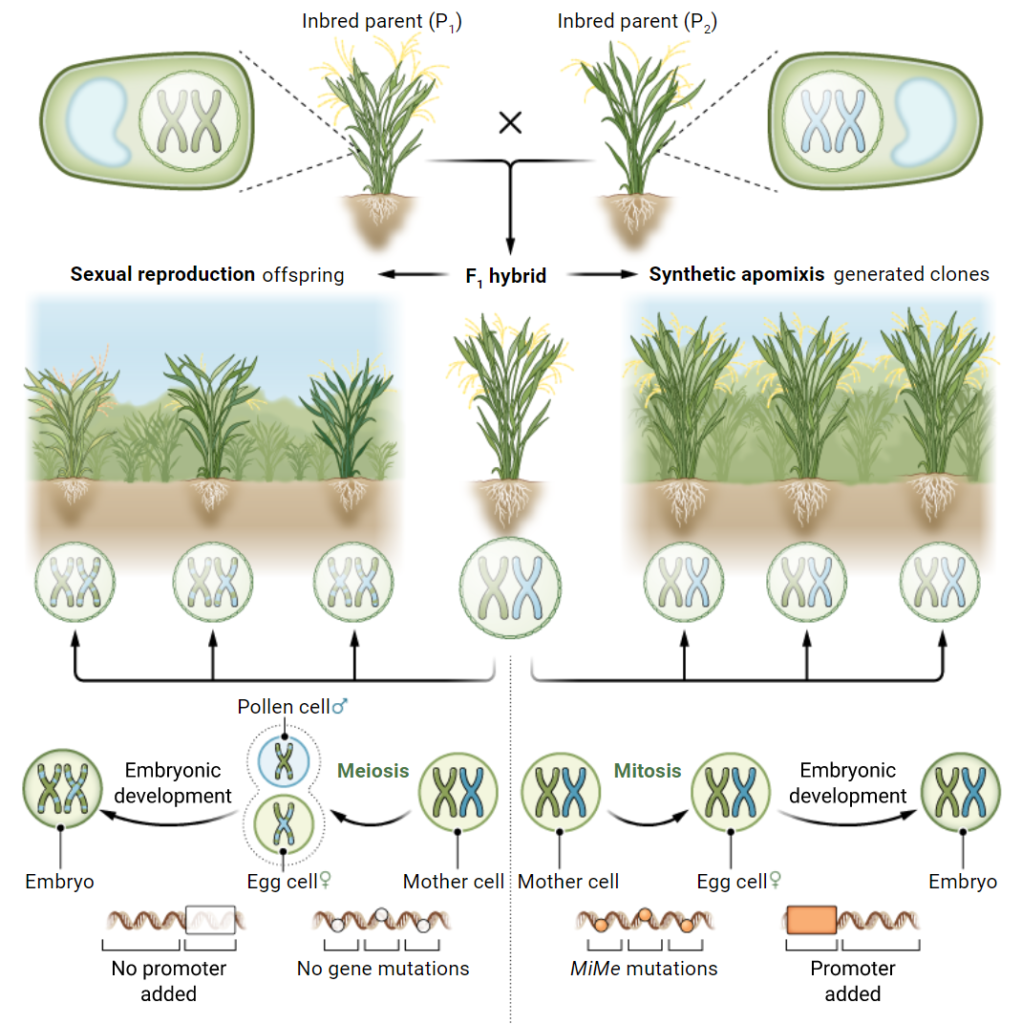Genetically Modified Organisms (GMOs) vs Hybrids
GMO seeds are created in labs for desirable traits by injecting seeds with genes from another plant. Some of these traits could be withstanding drier weather conditions or harmful insects. Unlike hybrid seeds that are products of cross-pollination, GMO seeds are generated in labs via gene modification. GMO seeds are not available to the general public, only to commercial farmers. But because they are artificially created in a lab, they are expensive to buy.
A hybrid seed, on the other hand, is a product of a cross between two genetically different plants of the same species or type. Usually, the seeds are cross-pollinated by hand, they are produced to prepare a crop that has desirable genetics of the two plant varieties, such as disease resilient or bigger fruit size. Why these hybrids are superior to typical plants isn’t clear. But one long-standing hypothesis is that favorable versions of genes from one parent dominate poor-performing, recessive genes from the other. Hybrid varieties have boosted the yield of maize, sorghum, and other crops by up to 50% and have resulted in other valuable traits, such as better drought tolerance. But the method is only feasible in some species; for example, this method won’t work for soybeans.
Currently, both GMOs and hybrids are not capable of producing seeds but the process of Apomictic Reproduction might change this for hybrids.


Apomictic Reproduction
Plant breeders are looking for ways to create hybrid seeds easier. A process called Apomixis, where the eggs inside the flowers become embryos without pollination occurs naturally in some plants, and if researchers could find a way to replicate this process in making hybrids, then Apomictic Reproduction would simplify how they produce hybrid seeds, quicken the release of new varieties, and reduce costs. The technology could also benefit farmers in poorer countries who might not have regular access to commercial hybrid seeds, because they could save seeds produced by the previous year’s crops.
In the late 1990s, as genetic tools became more readily available, experts were optimistic they could identify the genes behind apomixis and deploy them in crops, creating clones that would bypass the genetic recombination that happens during plant sex, which shuffles away favorable gene combinations, but progress was slow.
Hybrid Rice
Hybrid rice is prized by farmers because it is robust and high yielding. But only first-generation (F1) crosses have the prized genetics; sexual reproduction shuffles away the favorable traits and renders the seeds of later generations less valuable. To get around that problem, scientists have genetically engineered a rice strain that reproduces clonally, through a process called apomixis.

Sexual Reproduction vs Apomixis
In 2002, a key discovery was made by identifying a gene called Baby Boom. The gene, when turned on, triggered the growth of embryos from shoots and leaves, and since then, genes like this have been found in many plants.
Future of Crops
Research on other crops is picking steam. In China, some groups are also working on apomictic varieties of cabbage, tomatoes, and other vegetables. Further tinkering with genes that control seed development could lead to even more progress. Like most plants, the apomictic rice now under development still needs pollen to fertilize. future apomictic crop varieties wouldn’t rely on pollen at all—enabling them to produce bountiful seeds. But for now, gene editing is slowly being accepted and many governments are understanding the importance of this tool for bringing benefits to agriculture.
By: Meghana Mandadi

